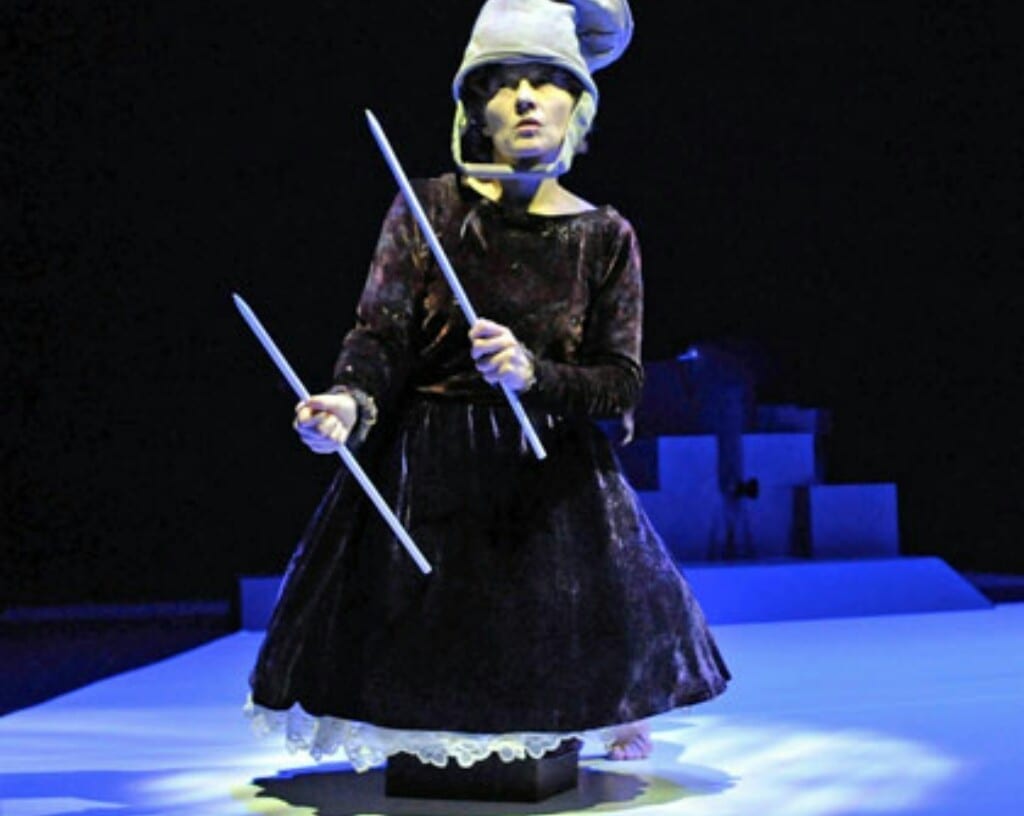The innovative, intimate new performance, Whispers, from Moussoux Bonté, is an engaging fusion of dance and theatre. This performance relates a lifetime in sound, light and dance, capturing the shadows and joys, hope and desperation of the solo performer, Nicole Mossoux. Intricate, complex lighting and a hauntingly beautiful soundscape, with live music, ensures that the audience too is immersed in the performer’s experience.
Child-like Nicole explores the limits of her body. Nicole’s movements are, at times, in tune with a strange music, seemingly generating the ambient sounds. Her ever y movement is echoed in a surreal soundscape with which she must come to terms. The audience learns, alongside the performer, the sounds of a new world and her own place in it. Gradually, Nicole’s persona touchingly constructs a rhythm from the incongruous sounds of her joints, lending a lyrical edge to her dance sequences. Daringly, Whispers suggests that this sound performance is not only a reflection of the dancer’s impact on her immediate environment; it is a magnification of the sounds of the performer’s body itself; her heart and lungs.
Nicole’s dancing seems to emerge organically from her contact with the stark, almost industrial, stage design. Her movements, at first, are primal, instinctual, but they narrate an awakening consciousness of her surroundings.
Soon, however, sound and image lose touch. The sounds of Nicole’s body are not hers to control, and the balance between the music and her motions is upset. Her movements seem to rise involuntarily from the world of sounds that surround her. The dancer is no longer independent, influencing her world; she becomes an object in that world. Objects on stage seem to take on organic properties and human attributes. Whispers questions the source of artistic inspiration through its exploration of this relationship between the performer and the stage. Nicole’s choreography moves between an aesthetic impulse and its dissolution, between control and abandonment.
This performance highlights the rich, moving possibilities of darkness and silence as much as it explores the range of emotional effects produced though light and sound. Whispers is, at times disquieting, alarming even, as Nicole tries to rebel against the orders of the music, as she herself becomes a stage prop, seemingly explored by the objects around her. The versatile, sumptuous costume design is highly suggestive under the low lights, appealing to an otherworldly decadence.
Above all, Whispers is a sensuous performance, demanding that the audience engage fully with the material, tactile stage design and haunting, shifting choreography. The delicate vulnerability of Nicole Mossoux and Patrick Bonté’s choreography, alongside the careful balancing of calm tones and sound driven to a frantic pitch, reveal humanity’s frailty movement in a precarious world, which it is not always within our power to command or understand.

